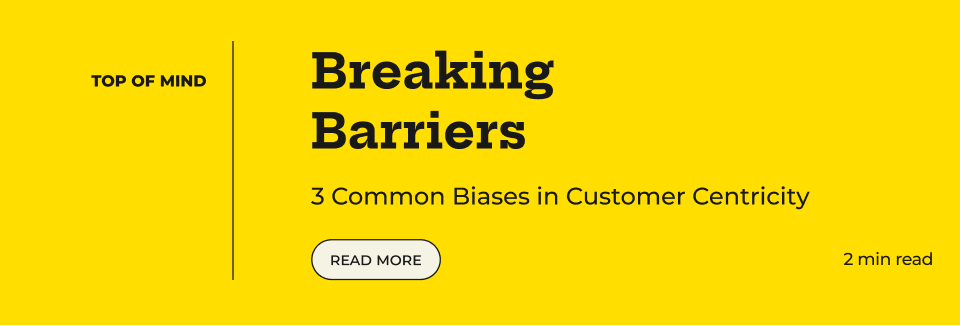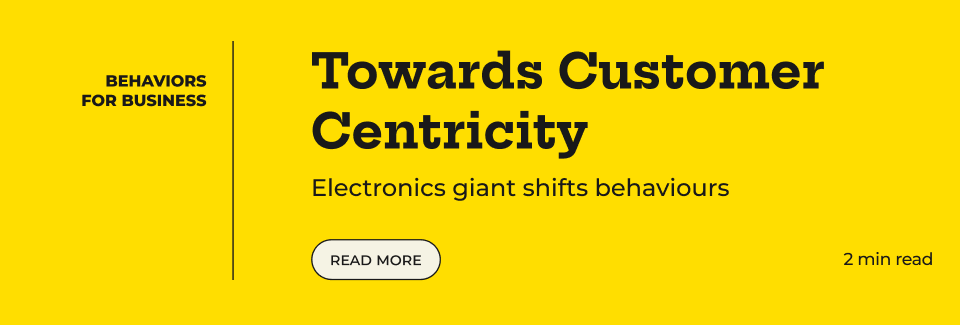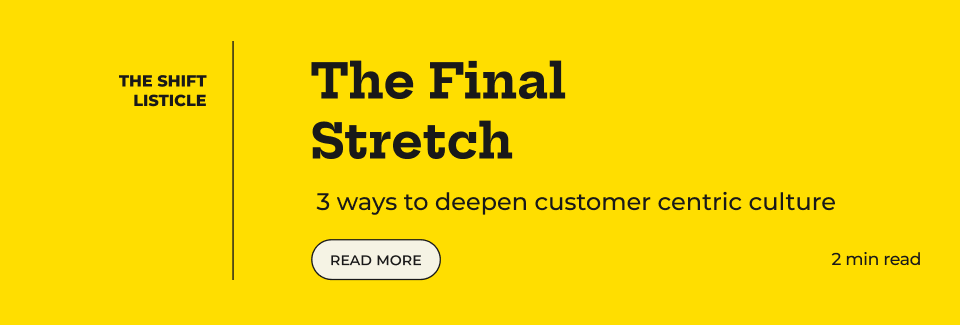Journey Towards Customer Centricity
Edition #05 November 2022
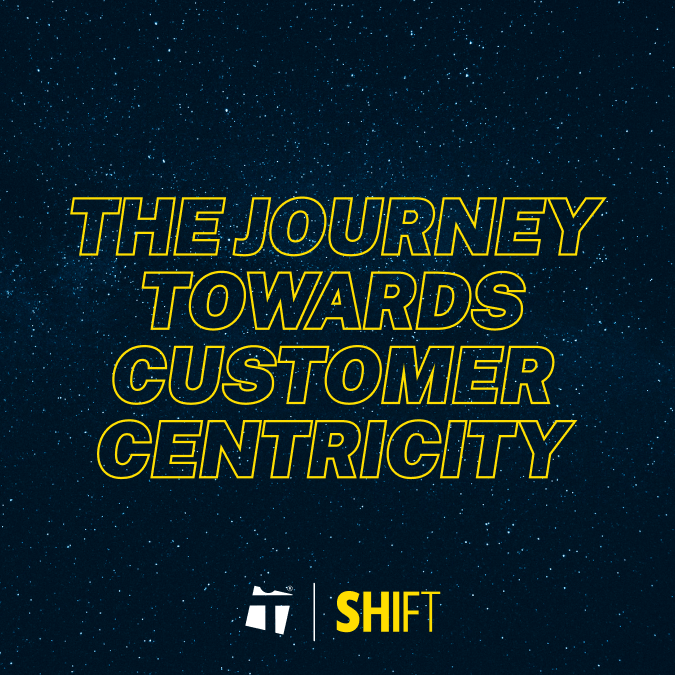
Some of the best organizations in the world have cracked the code of bringing the customer to the center of all that they do inside the organization and at the customer end.
In the world’s most customer-centric organisations, what customers need them to do is more important than what they think they need to do.
You can see these companies around you and these brands have embedded themselves in your subconscious permanently.
I have worked with some of India’s biggest companies to help them embed a culture of being customer-centric naturally. My experience has told me that true customer centricity is hardly ever achieved without a transition in the mindset of all employees, which is nothing but a culture shift. Adopting a “what’s best for the customer is best for us” mindset implies behaviour shifts for everyone in the company, from the C-suite to employees on the ground.
TOP OF MIND
3 Common Behavioural Heuristics in Customer Centricity

Consistent customer-centric behaviour transcends individual departments and functions. It is an integral part of the way everyone in a company behaves and performs. This change, as with most human behaviours, faces a myriad of barriers. Biases that influence employees even with the best of customer-centric intentions.
Here are the most common biases in customer centricity. The awareness and proactive action of these can accelerate the shift to your organization/function/team exhibiting customer centricity as a culture:
1. The Self-Serving Bias: Department Silos- Important knowledge is limited to a few people. Information is shared reactively, only when things break down. Employees tend to believe that certain information is only critical for them. For example, the know-your-customer data is not shared across functions, even if it can contribute largely to the day-to-day functioning of several roles.
2. The Overconfidence Bias: We know it all – Often organizations that are doing well do not actively look at room for learning from others. They tend to benchmark only within their industry, ignoring cross-sector ideas. Most domain experts do not upskill even when their insights may be obsolete or inapplicable. It is necessary to keep a tab on shifts in the marketplace. Changing narratives and trends must be proactively addressed across and consistently.
3. Escalation of Commitment: This is the best way – Most organisations have tried and tested processes, approval systems and regulations. They do not stop and check whether these are even helping their employee or customer agenda. Sometimes we cling to ideas even if they didn’t work in the past, refusing to let them go. The lack of empowerment and stickiness of redundant policies is often the biggest contributor to a poor customer-centric culture.
BEHAVIOURS FOR BUSINESS
Towards Customer Centricity
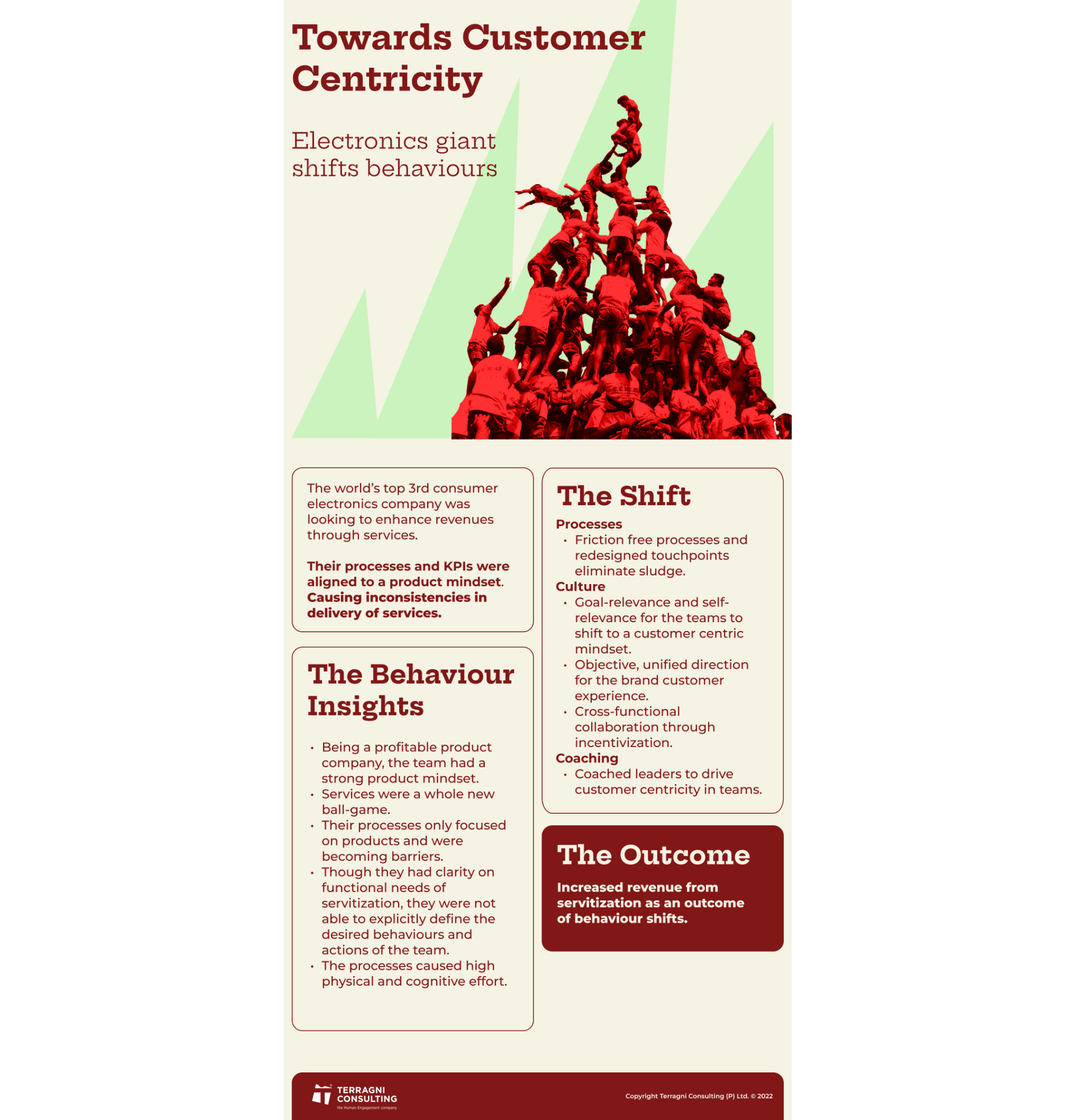
THE SHIFT LISTICLE
The Final Stretch
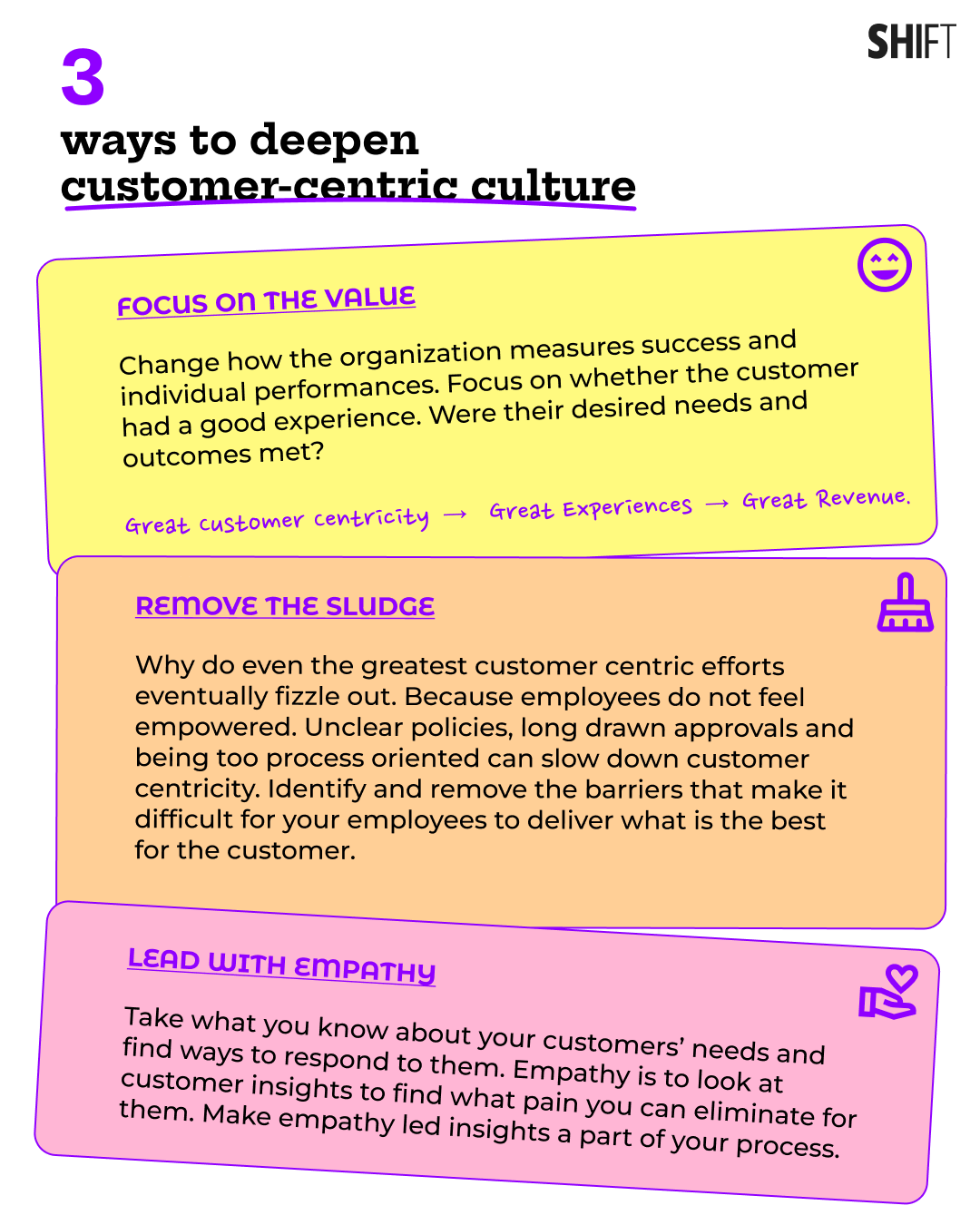
Not subscribed yet?


